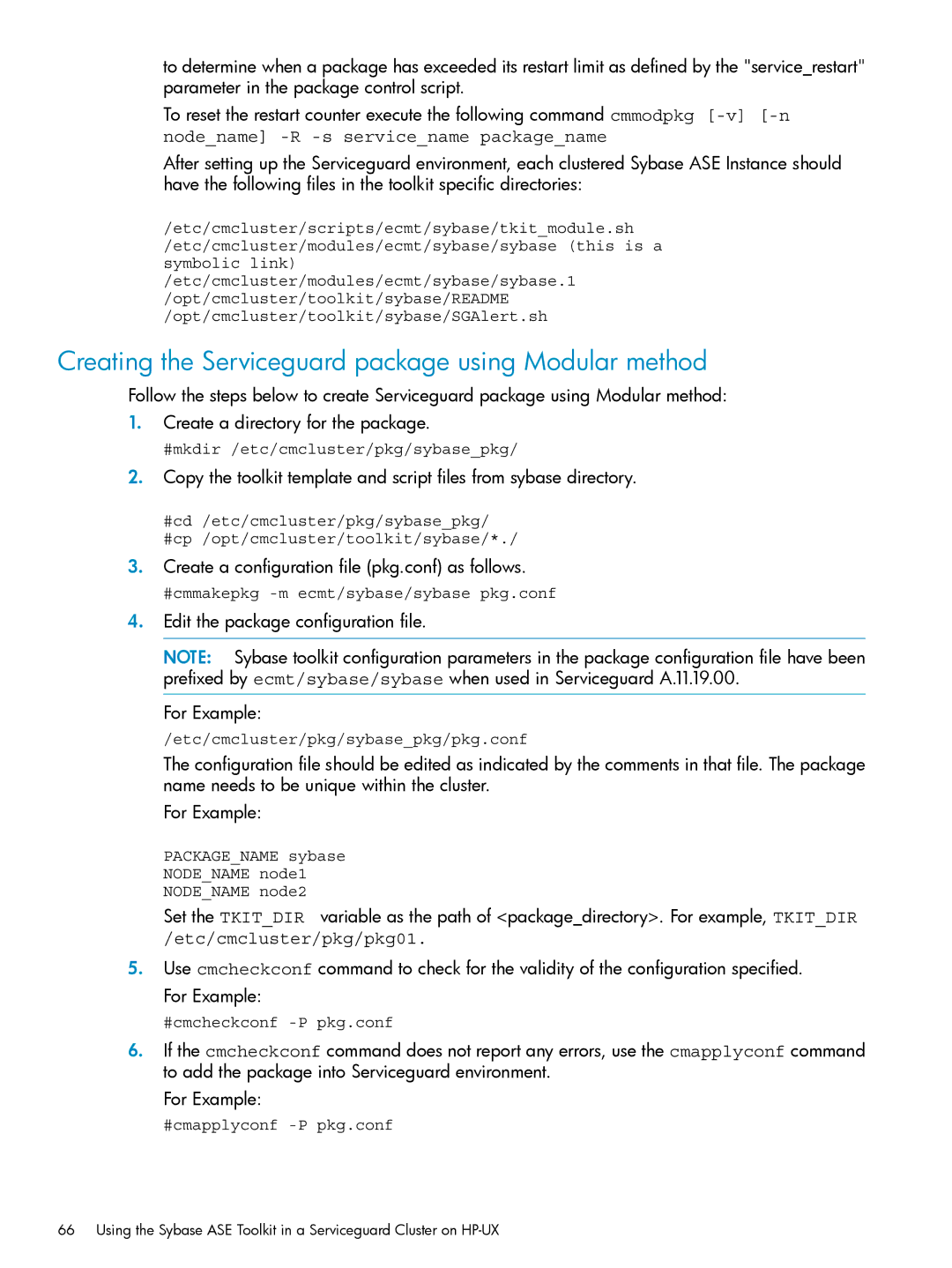to determine when a package has exceeded its restart limit as defined by the "service_restart" parameter in the package control script.
To reset the restart counter execute the following command cmmodpkg
node_name] -R -s service_name package_name
After setting up the Serviceguard environment, each clustered Sybase ASE Instance should have the following files in the toolkit specific directories:
/etc/cmcluster/scripts/ecmt/sybase/tkit_module.sh /etc/cmcluster/modules/ecmt/sybase/sybase (this is a symbolic link) /etc/cmcluster/modules/ecmt/sybase/sybase.1 /opt/cmcluster/toolkit/sybase/README /opt/cmcluster/toolkit/sybase/SGAlert.sh
Creating the Serviceguard package using Modular method
Follow the steps below to create Serviceguard package using Modular method:
1.Create a directory for the package.
#mkdir /etc/cmcluster/pkg/sybase_pkg/
2.Copy the toolkit template and script files from sybase directory.
#cd /etc/cmcluster/pkg/sybase_pkg/ #cp /opt/cmcluster/toolkit/sybase/*./
3.Create a configuration file (pkg.conf) as follows.
#cmmakepkg
4.Edit the package configuration file.
NOTE: Sybase toolkit configuration parameters in the package configuration file have been prefixed by ecmt/sybase/sybase when used in Serviceguard A.11.19.00.
For Example:
/etc/cmcluster/pkg/sybase_pkg/pkg.conf
The configuration file should be edited as indicated by the comments in that file. The package name needs to be unique within the cluster.
For Example:
PACKAGE_NAME sybase NODE_NAME node1 NODE_NAME node2
Set the TKIT_DIR variable as the path of <package_directory>. For example, TKIT_DIR /etc/cmcluster/pkg/pkg01.
5.Use cmcheckconf command to check for the validity of the configuration specified. For Example:
#cmcheckconf
6.If the cmcheckconf command does not report any errors, use the cmapplyconf command to add the package into Serviceguard environment.
For Example:
#cmapplyconf
66 Using the Sybase ASE Toolkit in a Serviceguard Cluster on
